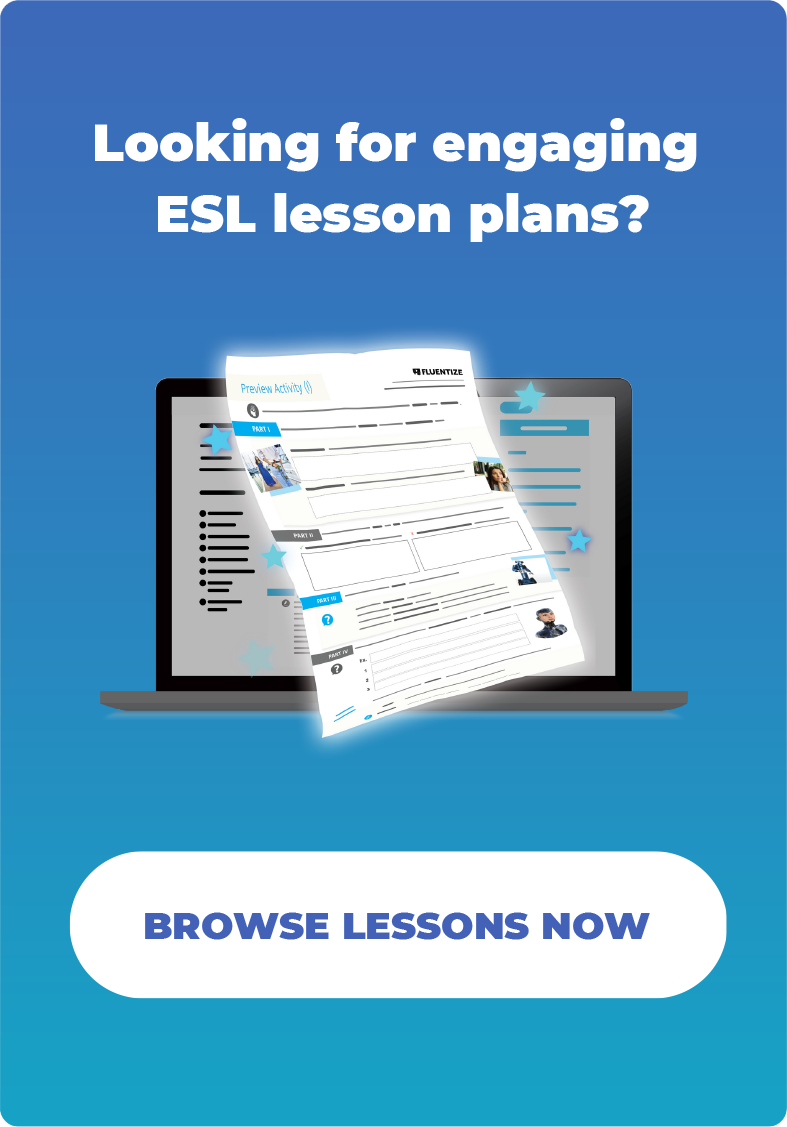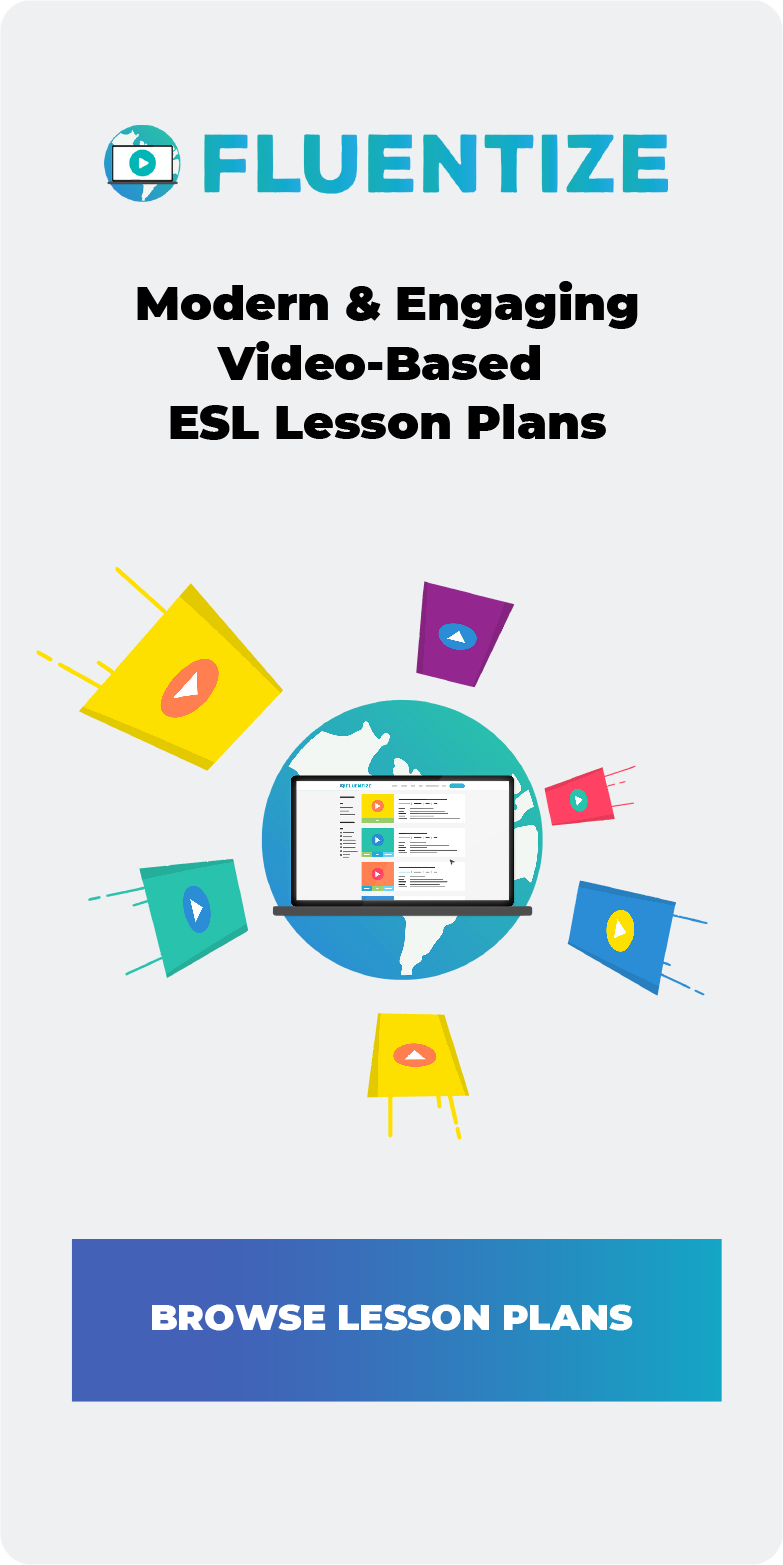Have you ever wondered how to do an ESL needs analysis for your students? What about an analysis of their CEFR level? How well do you understand your students’ goals, challenges, and level? During lessons, it’s natural to reflect on our students’ skills and needs. Why should we do this?
As we’ll learn, it serves as a guiding framework in ELT. Through a needs analysis, teachers can gain a clearer idea of our students’ abilities and objectives. It helps us better support our students’ learning journey. In essence, it’s a valuable tool for both teachers and learners. In this post, we’ll go through it all.
Advantages of conducting an ESL needs analysis
Imagine having a tool that gives you insights into your students’ abilities or needs. This is basically what an ESL needs analysis is! It offers a comprehensive understanding of students’ goals, challenges, and strengths. This enables teachers to make informed decisions. The benefits of a needs’ analysis include the following:
- They reveal students’ needs. It gives us a deeper understanding of each student’s goals and desires in their language journey.
- It helps us assess learners. We can measure their current proficiency levels and find out what they need to improve.
- It guides us in material selection. Based on a needs analysis, we can decide how to plan lessons. We could follow a traditional course book or introduce other resources. Or, you can do both, support your course book with other resources.
- It empowers learners. An ESL needs analysis allows students to have an active role. It allows their feedback and preferences to influence the curriculum.
- It gives ideas for tailor-made lessons. With an ESL needs analysis, you can design yours lessons according to individual or group needs.
- It helps teachers and students maintain focus. We use it as a guide to help the teacher and student stay aligned with objectives.
- It reduces trial and error. With a clear roadmap from the start, we make sure to optimise our lessons for student success.
So, how do we make this magic work? We’ve got many tools, and no, you don’t need a magic wand!
One idea is to use detailed questionnaires. These are designed to assess a student’s language challenges. There are so many diverse tools out there for this. You can do this simply through one-on-one chats, group discussions, or even personal diaries. One of the easiest ways to find out what your students’ challenges are is to simply ask them, take notes, and prepare accordingly. Then, you can take additional steps.
There’s a tool for every teaching style. For example, you could use:
- Questionnaires: These can cover a student’s language learning history or English usage scenarios. These questionnaires can be done in written form, using platforms like Google Forms. You can also do them orally as an interview.
- Continuous Analysis: It shapes the course, makes sure we stay on track, and evaluates progress at the end.
- Diverse Tools: Including surveys, interviews, material reviews, discussions, and personal diaries. These provide many different insights.
Conducting an ESL student level analysis (taking ‘placement tests’)

In addition to doing an ESL need analysis, it’s essential to learn about our students’ level of proficiency. Think of placement tests as the starting point. There are many resources online for this too. From Cambridge to Oxford, many tests are readily available. For online resources, you can do a quick Google search. Just search for “online placement tests CEFR”, and you’ll get a list of options, including:
Understanding fluency and accuracy in conversation
As we have conversations with our students, we should consider evaluating fluency and accuracy. These two aspects go hand in hand. In spoken language, fluency is like the current that carries words in a smooth way. Accuracy acts as a guide, steering our communication. These separate pieces come together naturally during informal chats. They show us how well a student knows the language.
Now, let’s talk about the details of assessing fluency and accuracy. We’ll offer useful tools to help you understand your students’ language abilities.
Fluency: The natural flow of speech

Fluency is all about speaking naturally and effortlessly. It’s the way we connect and put words together. Fluency is also about sharing thoughts and ideas without pauses or hesitations. A fluent speaker can continue a conversation without struggling to find the right words. Fluency is the way thoughts connect and how we communicate. We can compare it to the well-timed rhythm of a song. In essence, when words flow without disruption, it mean we’re communicating effectively and clearly. A fluent speaker can form a coherent dialogue easily.
As teachers have informal conversations with their students, they can look for specific signs of fluency. These can provide insights into our student’s comfort and competence. This guides teachers because they can adapt their teaching methods to help students improve.
Pauses and hesitations
Pay attention to how often a student pauses or hesitates in a conversation. These moments can show where a student has problems. How do they construct sentences? Are they using the right words in the right contexts? For instance, if your student says, “Well, you know, I went to the, uh, shop yesterday,” these hesitations and fillers like “uh” and “you know” are signs of fluency challenges.
Sentence structure
Examine how complex their sentences are. Fluent speakers naturally put words together, creating sentences that flow smoothly. Assessing how they form sentences naturally, without sounding awkward, is a sign of their fluency level. For example, a sentence like “I went to the market yesterday and bought fresh vegetables” shows strong sentence structure.
Natural rhythm
Focus on the rhythm and flow of their speech. A smooth and comfortable pace often shows a higher fluency level. Pay attention to how smooth it sounds in conversation. This rhythm shows familiarity and comfort with the language.
Fillers/Discourse markers
Listen for excessive use of filler words. These are words like “um,” “uh,” “you know,” and “like.” While using fillers is common, using them too much disrupts the fluidity of speech. For instance, if a student says, “Um, so, you know, I was, like, thinking about, uh, going to the movie, you know,” — this shows difficulty expressing thoughts smoothly.
Accuracy: precision in expression
Accuracy is important in using language effectively. It’s different than fluency. While fluency focuses on the smooth and natural flow of speech, accuracy focuses on using the language correctly. It involves choosing the appropriate words, register, and applying grammar rules correctly. Accurate language use ensures that the message is conveyed clearly without misunderstandings.
In teaching, accuracy is connected to fluency. It’s the foundation for clear and effective communication. Speaking accurately reflects a deeper understanding of the language’s nuances and rules, contributing to their overall proficiency. When observing your students’ accuracy, pay attention to the following:
Vocabulary choice and range
Pay attention to the words they choose. Assess whether they align with their level. Listen for advanced words used incorrectly. This could highlight gaps in vocabulary usage. If a student uses a word like “plethora” incorrectly instead of “many,” it shows they understand advanced vocabulary, but need to learn how to use it correctly.
Take note of the variety of vocabulary they incorporate in a conversation. Advanced learners exhibit a broader range of words. They also avoid repetitive language. A diverse selection of words reflects their mastery of language nuances and their ability to communicate effectively.
Grammar usage
Observe how effectively they apply grammar rules. Do they use tenses, subject-verb agreement, and sentence structures properly? Identifying grammatical mistakes can show the areas where they need to improve. For instance, a student saying “I has been studying” instead of “I have been studying” indicates a grammar issue.
Use of idioms

Listen for their use of idioms and phrasal verbs. Using them correctly shows they understand the language’s nuances. For example, a student that says, “The new project is a piece of cake” shows accurate use of an idiomatic expression.
By observing all these aspects, you can gain understanding of a student’s fluency and accuracy. This evaluation helps you tailor your teaching approach. Then you can work on helping them improve where there are gaps.
These two aspects are essential in a students’ language proficiency journey. By focusing on the fluency and accuracy of speech, you get to know your students’ abilities. As mentioned, this understanding goes beyond the surface and helps you tailor your teaching approach. Observing pauses, sentence complexity, vocabulary usage, or grammatical accuracy will help you provide effective support.
To sum up, try to assess fluency and accuracy through informal chats. These offer a practical way to understand your students’ language abilities. They’re a great tool to have in your teaching toolkit.
What if I prefer not to use a placement test?
As we start using an ESL needs analysis, asking the right discussion questions is a good way to create meaningful conversations. There are questions you can ask according to CEFR levels. But you shouldn’t forget about the benefits of placement tests. However, there are good reasons why teachers might choose alternative methods. This might include planning rich discussion material. This is especially true when considering the factors below:
- Limited time: Conducting a placement test might take a lot of time, especially when you have many students. When teachers are very busy, they may want a quicker way to assess students.
- Student comfort: Some students feel nervous or stressed by formal tests. It’s just natural. Engaging in conversations creates a more relaxed setting. They can naturally show their language skills without the pressure of a test.
- Real engagement: Meaningful conversations encourage genuine language use. Students can freely express themselves, showing their skills in situations that reflect real-life talks.
Exploring with pictures (flashcards) and videos
To enhance discussions, teachers can bring in visual aids for a more immersive experience. These are some ideas on what you can do:
- Flashcards: Teachers can make or find flashcards that show everyday scenes, objects, or actions. These visual cues help students connect words with real-life images, improving their vocabulary and starting conversations. For example, a flashcard with a beach scene might lead to chats about favourite vacation spots or memorable beach experiences.
- Personal Photos: Encouraging students to share their own photos adds a personal touch. It lets them link their experiences to the language they’re learning. Teachers can guide them through describing the photo, the story behind it, and their feelings about it.

- Video clips: Short video clips showing conversations, interviews, or common situations expose students to different accents, ways of speaking, and cultural contexts. After watching, students can discuss their thoughts. This improves their listening skills and understanding of real language use. Fluentize is a great ESL lesson planning resource to check out with video-based lessons. To make it easier for teachers, all lessons are assessed and created according to CEFR levels (A1 – C1).
Below are some general descriptions of CEFR levels you can refer to. Which of these descriptions sound like your students? With time, you’ll be able to easily assess whether a student is A1, A2, B1, etc. Keep in mind that each CEFR level is a spectrum within a spectrum. For example, you can have a student who is on the low end of A2 and another student who is on the high end of A2.
You can also ask them the following questions at the beginning of the course or starting lessons with them. If they find it easy to answer each question, you can ask follow-up questions or move on to the next one.
A1 Level: Beginner
These students are just starting out. They know some basic words and can handle simple phrases, but longer sentences might be hard to form. At this level, learners focus on basic skills like listening, speaking, reading, and writing. They start with simple grammar like present tenses and basic vocabulary such as greetings and daily activities.
- Where do you live?
- What’s your favourite colour?
- What’s your job or what do you study?
- Do you have any pets?
- Describe your morning routine.
- What’s your favourite animal?
- Do you enjoy cooking? What’s your favorite food?
- Describe your family members.
- Share your hobbies or leisure activities.
- What’s your favourite season of the year?
A2 Level: Pre-Intermediate
Here, students are feeling a bit more comfortable. They can express themselves better, even if it’s still on familiar topics. They should be able to understand simple texts and write short messages. In your lessons with A2 level students, you could focus on basic grammar structures such as present simple, past simple, and future with ‘going to’. They should also learn common vocabulary related to everyday activities, such as daily routines, hobbies, family, and food.
- What did you do over the weekend?
- Share a memorable holiday experience.
- If you could meet any historical figure, who would it be?
- Talk about a book or movie that you enjoyed.
- Describe your ideal vacation spot.
- Discuss a place you’d like to travel to and why.
- Share your favourite childhood memory.
- Describe an interesting event you attended recently.
- Talk about a movie or TV show you enjoy watching.
- If you could have any superpower, what would it be?
B1 Level: Intermediate
Students at this level can carry on basic conversations for a while and express opinions. They’re starting to get more into present perfect and can use common vocabulary. They know a variety of words on topics related to work, travel, cultural traditions, cooking, and technology. They read longer texts and write emails. At the B1 level, you could focus on building their grammar skills. You can do this by teaching more complex sentence structures, verb tenses (including past, present, and future), and basic conditional sentences.
- Discuss a recent achievement you’re proud of.
- Describe a typical dish from your culture.
- Share your views on a current social issue.
- If you could learn any skill instantly, what would it be?
- Talk about a moment that changed your perspective on life.
- Describe a skill you’d like to learn and why.
- Discuss the impact of social media on communication.
- Share a meaningful quote that resonates with you.
- Talk about a volunteer experience you’ve had.
- Discuss a time when you had to overcome a challenge.
B2 Level: Upper-Intermediate
They’re fluent and can handle complex discussions. They understand nuances and can even write essays on certain topics. They should be able to express themselves effectively in both spoken and written forms. In your lessons, you could focus on expanding their vocabulary to include idiomatic expressions, phrasal verbs, and formal language for various contexts.
- Describe a project you’ve been working on.
- If you had all the money in the world, what would you do?
- Discuss a historical event that fascinates you.
- Share an experience that pushed you out of your comfort zone.
- If you could visit any era in time, when would you go and why?
- Describe a dream travel itinerary.
- Discuss your views on the importance of cultural diversity.
- Share a personal achievement that required perseverance.
- Talk about a technology trend you find interesting.
- Reflect on a book or article that influenced your perspective.
C1 Level: Advanced
At the C1 level, students demonstrate near-native proficiency, with advanced language skills across all areas. They show a deep understanding of grammar and vocabulary. They can engage in in-depth discussions about niched topics.
They should also be able to comprehend complex texts with ease. In your lessons, you could work on mastering complex grammar structures and idiomatic expressions. This includes advanced tenses, conditionals, reported speech, and subjunctive mood. Additionally, they should expand their vocabulary to include niched vocabulary used in academic, professional, and formal contexts.
- What would your 15-year-old self be proud of you for today?
- Discuss a complex societal issue that needs attention.
- Share a life-changing decision you made and its impact.
- If you could have dinner with any three people, living or dead, who would they be?
- Reflect on a time when you challenged a deeply ingrained belief.
- Discuss the role of empathy in effective communication.
- Share your thoughts on the concept of lifelong learning.
- Reflect on a moment when you had to think critically.
- Talk about the relationship between art and self-expression.
- Describe a project you’re passionate about and its goals.
These are diverse questions designed for conversations across different CEFR levels. By incorporating visuals and asking more questions, you can create an immersive learning environment. This promotes linguistic growth and also develops students’ ability to engage in meaningful conversations. Assessing your students’ level goes hand in hand with your ESL needs analysis.
Main tip: Craft the learner profile

Now, let’s take a step back. Language isn’t just about vocabulary and grammar. It’s also about experiences, emotions, and individual journeys. When we craft a ‘learner profile’, it’s like sketching a portrait of our student. This isn’t just about their language skills. It’s more about their fears, joys, histories, and dreams. The questions we ask aren’t just routine. They can be keys to language learning. Some important questions to ask include:
- Have you studied English before? How and where?
- Which tools or methods have you found most effective?
- How would you define the best way to learn a new language?
- What are your thoughts on group discussions and activities?
- Describe any past experiences that shape your perspective on language learning.
Of course, these are just guiding questions. We should listen to their responses and use them to plan our materials. As a result, this can improve our connection with students. It can have a strong impact on the learning process.
The WIN approach to an ESL needs analysis

The WIN approach is a guide for teaching methods. It stands for “Wants,” “Interests,” and “Needs“. This approach serves as a system for learning about our students. By discovering their goals, we find the areas they’re interested in, as well as the skills they wish to acquire. Through this method, we put the student at the heart of the learning process. The WIN approach is a joint effort, where we collaboratively tailor a learning plan for their goals and visions. Start by asking students:
- What do you want to do in English?
- What are you interested in doing in English?
- What do you need to do in English?
- How do you envision using English daily?
- Which English competencies (reading, writing, speaking, listening) do you wish to prioritise?
You should get a lot of useful responses from students by asking these questions. Use this as fuel to plan your lessons. Once you have a good idea of your students’ level and needs, you can either plan your own lessons, or use pre-made materials adapted to their level and needs.
Using pre-made materials based on your ESL needs analysis
If you’re looking for a good place to find pre-made lesson materials, we’d like to suggest our materials on Fluentize. We offer pre-made lesson plans tailored to student level. Each lesson is based on an engaging YouTube video. They’re created by experienced lesson writers and teachers that understand the CEFR student levels. Once you’ve done your ESL needs analysis and know your students’ level, Fluentize can be a great resource. We’ve got lessons ready made for levels A1 through C1. Browse our lessons to find the right topic that matches your students’ level!
Final thoughts on doing an ESL needs analysis
An ESL needs analysis isn’t just jargon. It’s at the heart of effective language teaching. It helps us remember why we do what we do. It’s a guiding star for us and our students. We want to support and celebrate our students’ achievements. This is the main purpose of an ESL needs or student level analysis. It also gives us the chance to personalise our teaching. Don’t you want to give your students the best learning journey possible?
Do you have any thoughts on using an ESL needs or student level analysis? Have you ever used them? If so, we’d love to hear about your experience. Feel free to leave a comment below!









